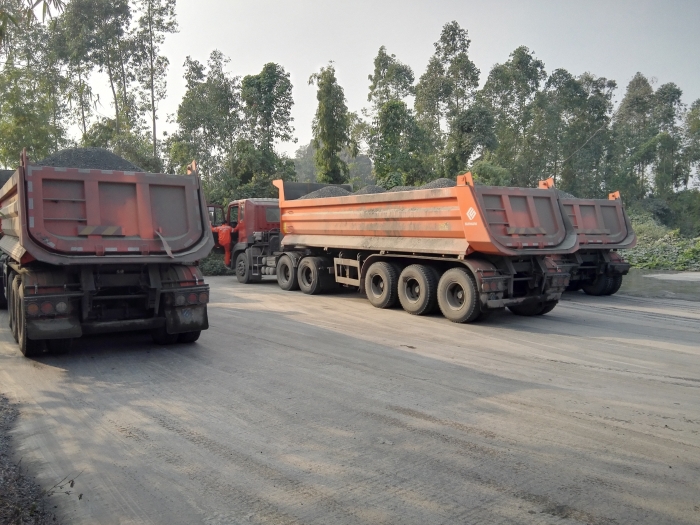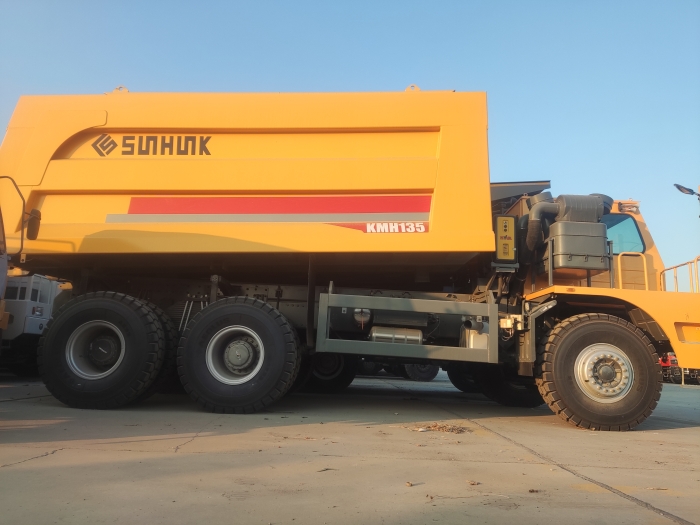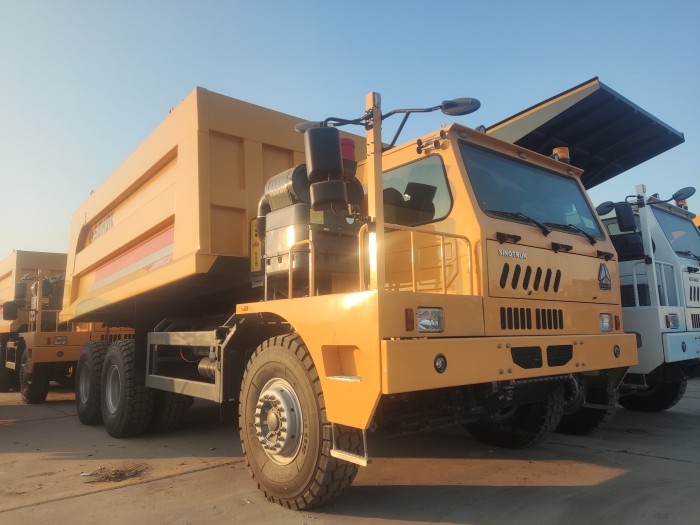- PRODUCTS
- SOLUTION
- SERVICE
- NEWS
- ABOUT US
Semi-trailers use fixed, steering, lift, and self-steering axles, each designed for specific load, maneuverability, and efficiency needs.
A semi-trailer axle is a central shaft for rotating wheels or gears, crucial for supporting the semi-trailer's weight and ensuring smooth operation during transit. These axles bear the brunt of the load, distributing it evenly across the trailer's structure. They play a pivotal role in maintaining the stability of the vehicle, especially when navigating through turns or uneven terrains. The design and configuration of semi-trailer axles can vary, depending on the specific requirements of the cargo and the trailer type. Typically, a semi-trailer might feature multiple axles grouped together to manage heavy loads more efficiently.
Semi-trailer axles are vital for transporting heavy loads, ensuring vehicle stability, and improving fuel efficiency. They support weights between 20,000 to 34,000 pounds per axle group and are key to the safety and operational efficiency of semi-trailers. Regular maintenance and the integration of advanced technologies like air suspension systems enhance their performance. Axles play a crucial role in the logistics and transportation industry by distributing load, ensuring vehicle safety, and extending the lifespan of semi-trailers through innovative design and care.
Axles also have a direct impact on the fuel efficiency and wear and tear of the vehicle. Properly aligned and maintained axles reduce resistance, which in turn can lead to improved fuel economy. On the other hand, axles in need of repair or alignment can cause increased tire wear, resulting in higher operational costs and potential safety risks.
In summary, semi-trailer axles serve as the backbone of the trailer's structure, crucial for load distribution, vehicle stability, and safety. Through innovative designs and regular maintenance, these axles can significantly enhance the performance and reliability of semi-trailers, making them indispensable in the logistics and transportation industry. For more detailed information on semi-trailer axles, including their design and maintenance, refer to the Wikipedia page on vehicle axles.

Fixed axles, as the name suggests, remain stationary and do not pivot or lift. They are the foundation of most semi-trailer designs, providing sturdy support for heavy loads. These axles are best suited for uniform road conditions where maneuverability is not a primary concern. The simplicity of their design translates to reliability and lower maintenance costs, making them a preferred choice for long-haul transportation. Fixed axles can typically support up to 20,000 to 34,000 pounds per axle group, ensuring the semi-trailer's capability to carry heavy and bulky goods.
Steering axles enhance the maneuverability of semi-trailers, especially beneficial for navigating tight turns and complex roadways. They operate by pivoting, either manually through a steering mechanism or automatically via advanced tracking systems. This ability to steer helps distribute the turning forces more evenly, reducing tire wear and improving the semi-trailer's overall handling. Steering axles are particularly advantageous in specialized semi-trailers, such as those used for transporting oversized loads or operating in urban environments where space is limited.
Lift axles, also known as drop axles, can be raised or lowered as needed. When not required for additional support or to meet legal weight limits, these axles can be lifted off the road surface, reducing tire wear and enhancing fuel efficiency. The design of lift axles allows for greater flexibility in load management and compliance with axle weight regulations. By lifting unneeded axles, operators can minimize unnecessary friction, leading to a potential reduction in fuel consumption by up to 4% to 5% under certain conditions.
Self-steering axles automatically adjust the wheel angle in response to the semi-trailer's movement, optimizing the tire contact path with the road. This technology significantly reduces the turning radius, enhances stability during cornering, and lowers tire wear through efficient alignment. The self-adjustment mechanism is particularly beneficial in reducing scrubbing (the sliding motion of tires against the road surface), which can lead to premature tire degradation. Self-steering axles are ideal for semi-trailers that frequently navigate winding roads or are subject to tight maneuvering conditions.
Each axle type offers unique benefits tailored to specific transportation needs, from enhancing load capacity and maneuverability to improving fuel efficiency and reducing maintenance requirements. For further details on the mechanics and applications of different semi-trailer axles, exploring resources such as Wikipedia's page on axles can provide comprehensive insights.

The load capacity of semi-trailer axles is a critical factor in determining the type of cargo they can transport. This capacity typically ranges from 20,000 to 34,000 pounds per axle group, allowing for the accommodation of a wide variety of goods, from lightweight consumer products to heavy machinery. Choosing the right axle for specific transport needs involves considering the total weight of the cargo, the distribution of that weight, and the legal weight limits imposed by road authorities. For heavy-duty applications, axles with higher load capacities are essential, whereas lighter loads can be efficiently managed with standard axles, optimizing fuel consumption and reducing operational costs.
The materials used in axle production, such as steel and alloys, are chosen for their strength, durability, and resistance to wear and tear. High-quality steel, for instance, provides the robustness required to withstand the heavy loads and stresses encountered during transport. The manufacturing process, including forging and machining, also plays a significant role in the axle's performance. Advanced manufacturing techniques can enhance the structural integrity of axles, ensuring they meet the rigorous demands of road transport. The selection of materials and precision in manufacturing contribute significantly to the axle's ability to resist bending and breaking under heavy loads.
Axle dimensions are another vital consideration, affecting not only the load capacity but also the stability and maneuverability of the semi-trailer. Standard axle lengths are designed to fit the majority of trailer frames, facilitating easy integration and maintenance. However, customization options are available to meet specific requirements, such as wider axles for increased stability when transporting tall or top-heavy loads.
Selecting the right axle involves balancing the technical specifications with the intended use of the semi-trailer, ensuring optimal performance, safety, and regulatory compliance. For in-depth information on axle specifications and their implications for semi-trailer design and functionality, referring to specialized resources or consulting with manufacturers can provide valuable insights. For more detailed exploration of axle materials and manufacturing processes, the Wikipedia page on steel offers comprehensive information on one of the most commonly used materials in axle production.

Conducting regular inspections of semi-trailer axles is essential for identifying wear signs and potential issues early on. A comprehensive axle inspection should include:
· Visual Inspection: Look for signs of wear, corrosion, or damage to the axle components, including the axle beam, hubs, and bearings.
· Lubrication: Check and replenish the lubricant levels in the axle hubs to ensure smooth operation and prevent overheating.
· Brake System Check: Inspect the brake pads, drums, and connections for wear or damage. Ensure that the braking system is functioning correctly.
· Tire Inspection: Examine tires for uneven wear patterns, which can indicate misalignment or issues with the axle.
· Bearing and Seal Inspection: Look for signs of bearing wear or seal leakage. Worn bearings or leaking seals require immediate attention to prevent axle failure.
Implementing a scheduled maintenance program can significantly extend the life of axles, reducing the risk of unexpected breakdowns and costly repairs.
Regular maintenance of semi-trailer axles is crucial for extending axle life and ensuring the safe operation of the vehicle. Proper care:
· Prevents Accidents: Regularly maintained axles are less likely to fail, reducing the risk of accidents caused by axle breakdown.
· Enhances Performance: Well-maintained axles provide better stability and handling, improving the overall performance of the semi-trailer.
· Saves Money: Preventative maintenance helps avoid costly repairs and replacements, lowering the total cost of ownership.
· Ensures Compliance: Keeping axles in good condition ensures compliance with road safety regulations and standards.
Adhering to a regular maintenance schedule not only contributes to the longevity of the semi-trailer axles but also promotes a safer driving environment for all road users. For further guidance on maintaining and inspecting semi-trailer axles, resources such as maintenance manuals from axle manufacturers or the Wikipedia page on vehicle maintenance can provide valuable information.